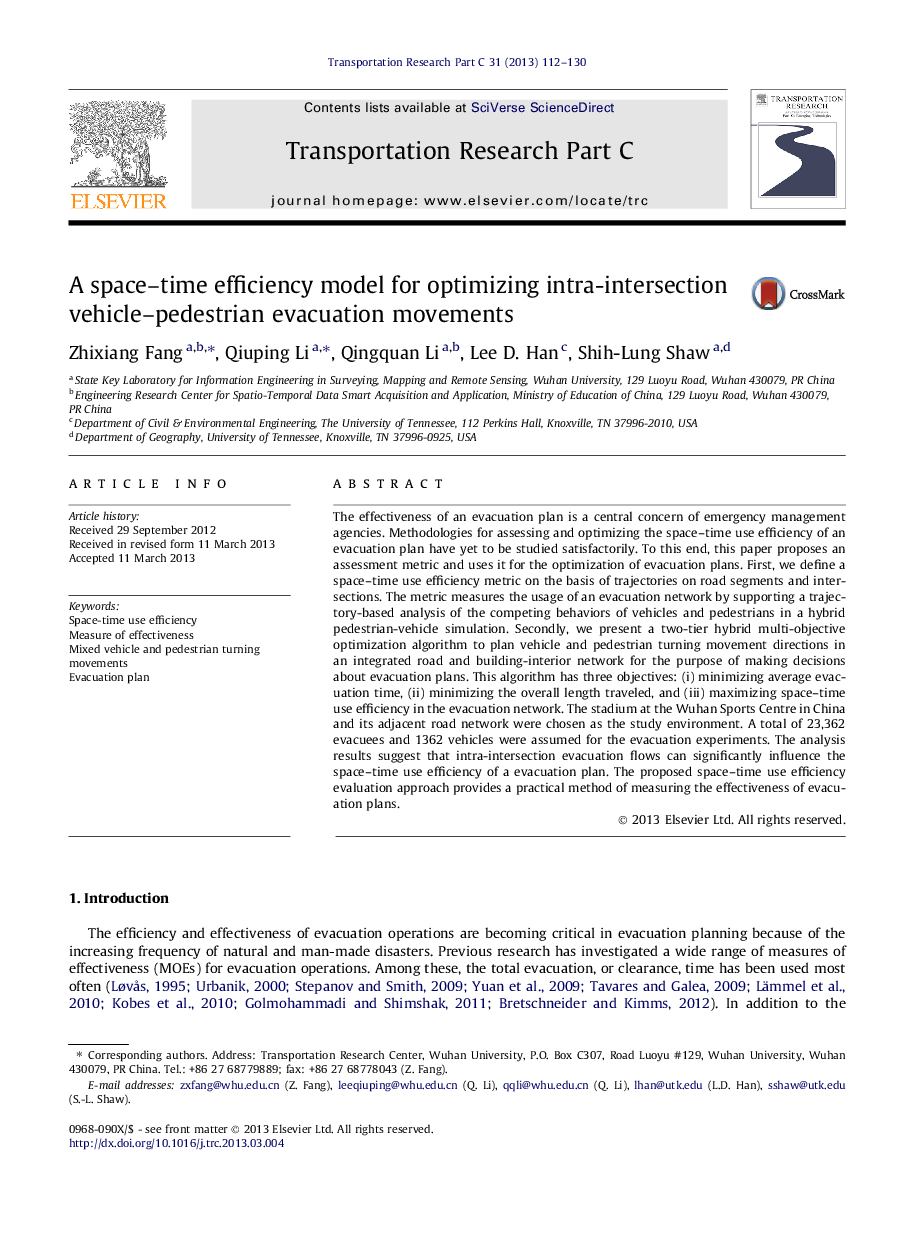| Article ID | Journal | Published Year | Pages | File Type |
|---|---|---|---|---|
| 525393 | Transportation Research Part C: Emerging Technologies | 2013 | 19 Pages |
•Define a space–time use efficiency metric based on trajectories.•Propose a two-tier hybrid multi-objective optimization algorithm.•Plan vehicle and pedestrian turning movement directions.•Assess space–time use efficiency of an evacuation plan.
The effectiveness of an evacuation plan is a central concern of emergency management agencies. Methodologies for assessing and optimizing the space–time use efficiency of an evacuation plan have yet to be studied satisfactorily. To this end, this paper proposes an assessment metric and uses it for the optimization of evacuation plans. First, we define a space–time use efficiency metric on the basis of trajectories on road segments and intersections. The metric measures the usage of an evacuation network by supporting a trajectory-based analysis of the competing behaviors of vehicles and pedestrians in a hybrid pedestrian-vehicle simulation. Secondly, we present a two-tier hybrid multi-objective optimization algorithm to plan vehicle and pedestrian turning movement directions in an integrated road and building-interior network for the purpose of making decisions about evacuation plans. This algorithm has three objectives: (i) minimizing average evacuation time, (ii) minimizing the overall length traveled, and (iii) maximizing space–time use efficiency in the evacuation network. The stadium at the Wuhan Sports Centre in China and its adjacent road network were chosen as the study environment. A total of 23,362 evacuees and 1362 vehicles were assumed for the evacuation experiments. The analysis results suggest that intra-intersection evacuation flows can significantly influence the space–time use efficiency of a evacuation plan. The proposed space–time use efficiency evaluation approach provides a practical method of measuring the effectiveness of evacuation plans.
